March 6, 2023 | Features
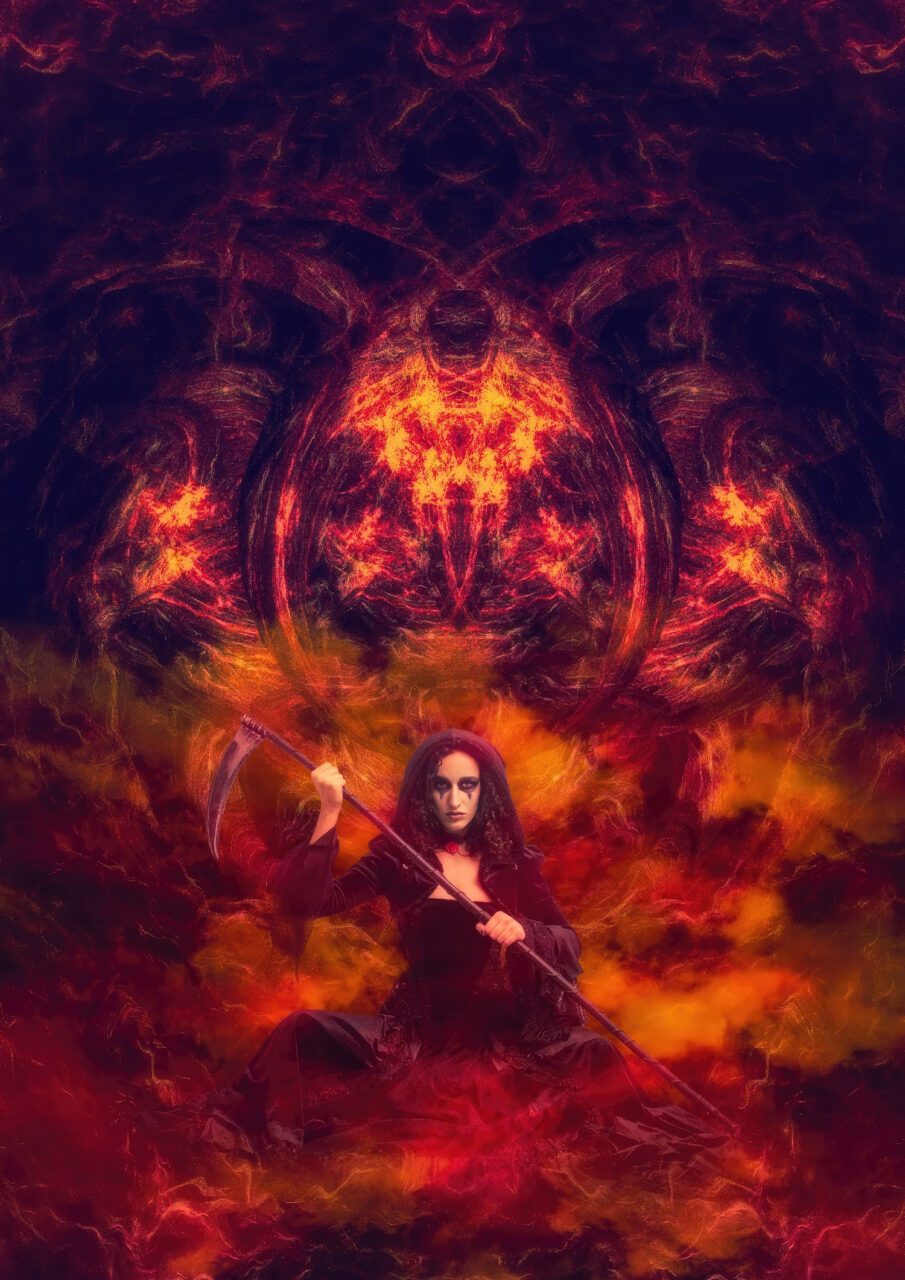
Would you be able to share more about your gear, equipment, and post-processing?
I shoot with Nikon, using a D4, a D4s and lately a Z6, having sold my D800. The main studio camera is the D4s with a 24-70 2.8 lens, the D4 has a 70-200 2.8. There is a 24-70 f4 Z lens on the Z6. I also have an adaptor to mount the standard Nikon lenses on the Z6, as I have had occasion to need a quiet camera with the 70-200. The D4 shutter can raise eyebrows in a silent environment, whereas you can take a candid photo with the Z6 using the digital viewfinder and no one knows you’ve taken a photo.
Most of the paid work I do is non-studio, corporate work, but I have a small studio at the back of my house.
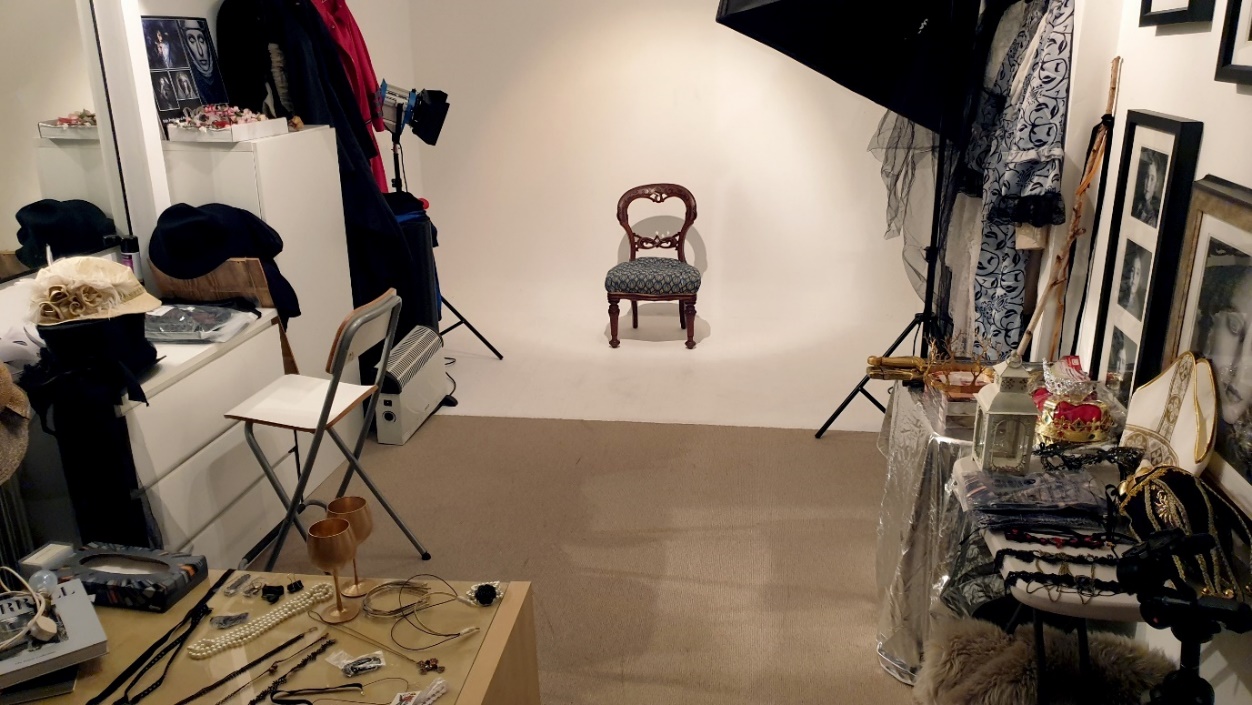
Over time, I bought a lot of props (Amazon and Wish mostly) for creative shoots using models. While good stuff is expensive, it isn’t always necessary – careful, and creative use of cheap props can work in a photo. It’s not like the model (or you!) is going to wear it going down to the pub on Tuesday night.
I work with models and chose to pay them as I don’t like TFP (time for photos/prints). TFP means I have a photographic obligation toward the model, and I don’t want that. I want to be free to create whatever and whenever I want – within reasonable parameters obviously. €200 for a day’s shoot is around average, although better models may charge more, and newer models may charge less. An experienced model can get your shot quicker than someone learning the ropes. But because I prefer not to do TFP, doesn’t mean I don’t recommend them to others. If it works for you and the model, then go for it, and remember to agree on the deliverables beforehand.
Regarding post-production, I would be fairly expert in CS6 and Lightroom 6. I use NIK filters by DxO labs, and I create my own brushes and backgrounds. I have programmed several of my favourite shortcuts into CS6. Even though I say I am ‘fairly expert’ in CS6, separating subjects from backgrounds is always a challenge, and I sometimes had to give up on some images, usually after hours of frustrating effort!
My Windows PC has terabytes of storage over three internal SATA drives and an enormous 48GB RAM. I used to be in IT, so I have no problem connecting devices to the motherboard or taking parts from one PC and putting them into another. It all helped to build a decent machine.
Would you be able to share with us the most rewarding and the most challenging aspects of being a Fine Art photographer?
I love creating. I can’t paint or draw, but I can take a photograph and manipulate the hell out of it using my software. I take great satisfaction from creating something I like. Something I can strongly relate to. I would often have a strong emotional attachment to my creations, and while I appreciate that the appeal of the more creative images is subjective, (competition judges sometimes don’t see the boundary-stretching images the same way I do), I am happy to put several on my walls at home, subject to the approval of my wife. You can imagine the scenario over a Sunday morning coffee – “No darling, it’s a Fine Art nude, not a photo of a naked woman!” Joking aside, I don’t do much Fine Art nude, most of my models are clothed.
There is little financial gain for me with Fine Art photography. It costs money and time to do a shoot (Model, MUA, Props), €350-€400 isn’t unusual, and if you do several of these a year, it sure adds up! I tried to sell images on Etsy but I spent more on advertising than I received in sales, so I gave up. So yes, it is challenging to recover the financial outlay. I’m not saying it can’t be done, obviously, some do. However, it takes the right marketing and sales effort and knowing what sort of image the market demands. In other words, what sells?
That said, my objective isn’t financial gain, but creative gain. I experiment. I learn. I push the boundaries. And yes, occasionally I push them too far, but that’s okay too. It’s important to know what doesn’t work as well as what does work.
Winning awards is obviously rewarding. It’s a vindication. An affirmation of your creative process. Over the past few years, I’ve received the IPPVA Portrait Photographer of the Year Award, Open/Creative Award, Chairman’s Award, and this year, the Fine Art Award. I’ve been runner-up in three categories in that time also. Gotta lotta medals, including golds, from the IPPVA and others too. All of this was thanks to the work I did in the studio and the feedback from IPPVA competitions over time, and there is immense satisfaction when you see your own work evolve, improve, and achieve the rewards you strive for.
Further, I now have wall-art images which I use not only to decorate my home but to decorate my website too. Good images on your website say something about you as a photographer and invest potential clients with confidence in your ability to deliver wonderful images for them.
Me? I have my award-winning panels on my office wall at home. It’s good for my mental health 😊.
Going forward, I see challenges to Fine Art photography from AI-generated images. Midjourney, Dall.E 2, and Stable Diffusion are already capable of producing amazing images and they are going to get better. Much better. Things like book covers, illustrative art based on photos, and concept pieces will soon all be done with AI at a fraction of the cost of something created by a photographer or digital artist.
For example, I created the book cover below using Midjourney and a little work in Photoshop without recourse to any photographs.
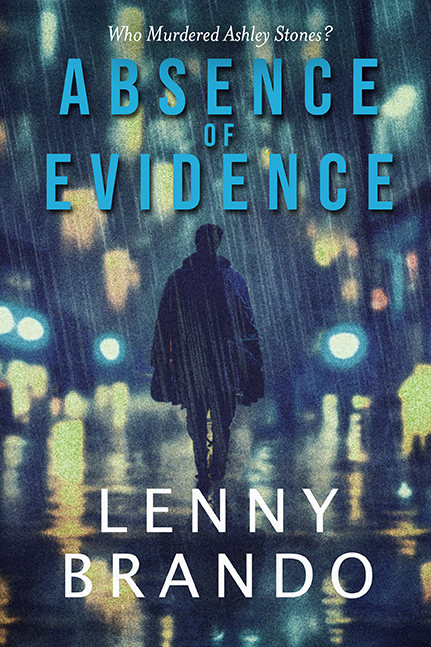
Sure, many of my images stray more towards digital art rather than pure, camera-only images, but I still see a looming challenge from AI, and perhaps one way for the photography profession to meet this challenge is to play up the benefit of personal Fine Art, where the image is created for a specific client, although one could argue this is creative portrait photography rather than Fine Art. That raises the question too, of what qualifies as Fine Art? I’m not sure there is a universal answer to that question, as Fine Art means different things to different people.
Fine Art is subjective as is all art. You might see an artistic installation in a gallery, and you ask yourself ‘is that really art’? Yeah? Me too. I’ve been there.
But let’s come back to the almost philosophical question – why shoot Fine Art? If it’s for your own creative gain, then there is no issue, no threat from AI. In fact, you can harness AI for your own use. Of course, if it’s for financial gain and you’re a marketing whizz, then it might well work for you. As I said earlier, you need to make sure there is a market for your work, and you need to match buyers to your products. It’s related to the age-old photography dilemma. Do you shoot for show or shoot for dough? It’s all jolly fine to create lovely-looking images, but if no one is going to buy them for their wall, sooner or later, you’re going to run out of wall space in your home.
Check these AI images out – https://www.midjourney.com/showcase/
What did it feel like to be awarded Fine Art photographer of the year?
Loved it, mate. Loved it. I had been runner-up twice before to Michael Hayes and it was the one award I felt I had missed out on, and I knew I had to up my game if I was going to pip Michael to the top spot. Michael didn’t enter the Fine Art category this year, so while I won, I never got to push him into second place. But it’s cool. We have a friendly rivalry and have great respect for each other as photographers.
How do you keep yourself inspired to create? And are there any artists and images that move you?
I love art. Always have. I like to visit art galleries and seek inspiration from paintings and artists. One of my favourite photographs was inspired by a painting by Swiss artist H R Geiger, probably best known for his input into the Alien movies and the cover of Emerson, Lake and Palmer’s album ‘Brain Salad Surgery’.
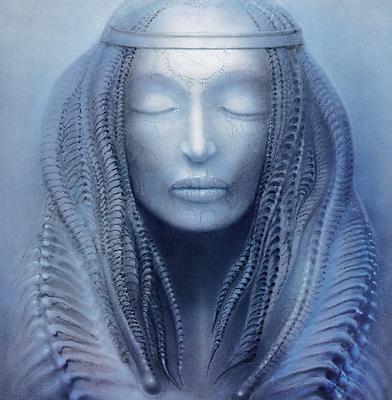
The image above inspired the multiple award-winning portrait below I created in my studio with model Fredau.
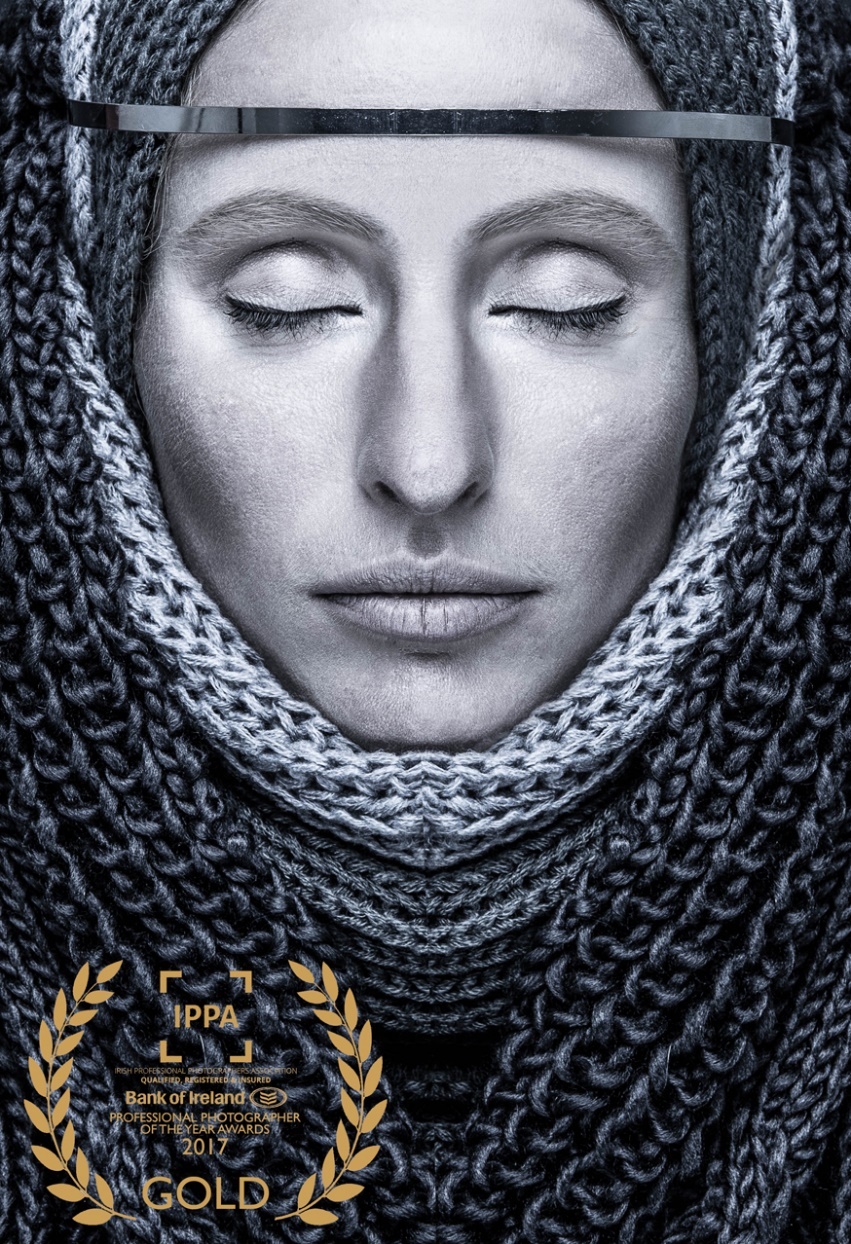
There is inspiration everywhere. I created a whole series of images based on Tarot cards, all 22 of the major arcana, several of which were featured in my Fine Art runner-up panel in 2021. I like gothic images, and I created a lot of images using a fantastic black dress I bought. A dress I may have overused due to the fact it cost me a fortune, and I was determined to get my money’s worth. (Got suckered for customs duty and VAT as I bought it outside the EU. Yeah. I know. Won’t be fooled again.)
I look to album covers too. Did the Aladdin Sane thing and got a silver medal. I later made another, more creative version which I thought was better, but that view, too, is subjective. Maybe I just got tired of the original or thought it was too like the album cover. Now, five years later, I’d want to remove the shadow effect behind Jocey in the album cover copy. Judge for yourself below.
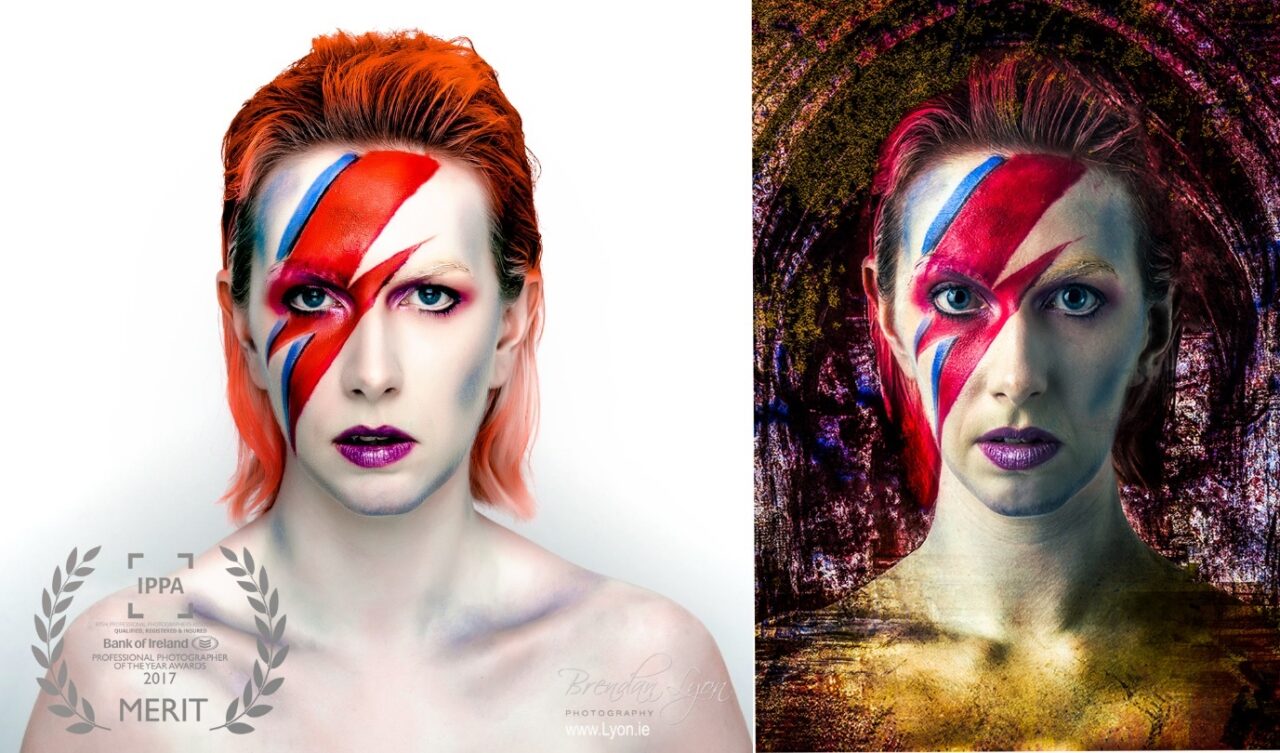
Like I said, there’s inspiration everywhere. My advice? Now? Just go for it. Try it. See what happens. It might be crap. It might be great. And even if it is crap, it’s your own crap! And maybe, just maybe, you will have learned something to take into your next project.
How did you become a professional photographer?
I was in IT for years. Slaving away in the corporate world in the City of London in finance and insurance. Left the City after a while and went into the airline IT sector at Heathrow. Travelled the world and made a few pounds. Got bored, quit IT, and moved to Cork. Fooled around in the wine business but developed a taste for the good stuff and drank more than I sold. That was the death of that business idea, and I moved back home to Dublin.
Then I remembered my time in my mate’s attic many years ago with Jobo drums, FP4, Ilford and Agfa paper, Cibachrome, and a pair of Nikon FEs. Always had a camera or two on me, so, as I searched for something meaningful to do for a new career, I got a photographic deal with a medical magazine in 2007 and took it from there. I did learn though. Went to a lot of seminars. Worked hard on my craft. I now cringe at the images I first submitted to the IPPVA competition. I thought they were great at the time, but today? Let’s just say ‘not so much’. And no. You can’t see them.
What would be your 3 main tips for an amateur photographer wanting to start a business?
One of the biggest issues I see is pricing. Too many photographers aren’t confident in their pricing and don’t charge enough. This creates several problems.
Photographers starting out need to educate themselves in running a business as much as educating themselves in capturing top images.
When it comes to commercial work, I charge €250 for the first hour on-site – a minimum fee. Coverage for a full-day event is typically €1350. Clients get captioned photos which they can download from my website for their own Press and PR use. Third parties must buy a licence for use from me. Here’s the copyright notice, and feel free to copy it:
“Copyright of all images taken remains with Brendan Lyon at all times. The licence given with the digital images allows the Buyer to distribute and print the images without charge to Newspapers, Periodicals, Journals, Web Sites, leaflets, or any other reasonable outlet for temporary use in the promotion of the Event or the Commissioning Buyer’s services. Permanent display of printed copies of images is prohibited under this licence. Personal use of the images is prohibited under this licence. The Buyer is not permitted to deliver, pass on or give any of the photographs in any format to other suppliers (e.g. the Venue, caterers, performers etc), nor to any delegates, speakers, attendees, celebrities, politicians etc. Any such requests are to be referred to Brendan Lyon.“
My top three tips:
What and where would you most love to photograph right now?
I do have a project in mind. I want to use a mannequin in interesting settings to tell a story over, say, twenty images or more. I would need to write the story and plan it out, buy the props, scout the locations, and all that. But it would be fun and it is something I’ve had in mind for some time. I might even use a model, but that would be expensive unless, despite my earlier reservations, I go for a collaboration. We’ll see.
No Comments